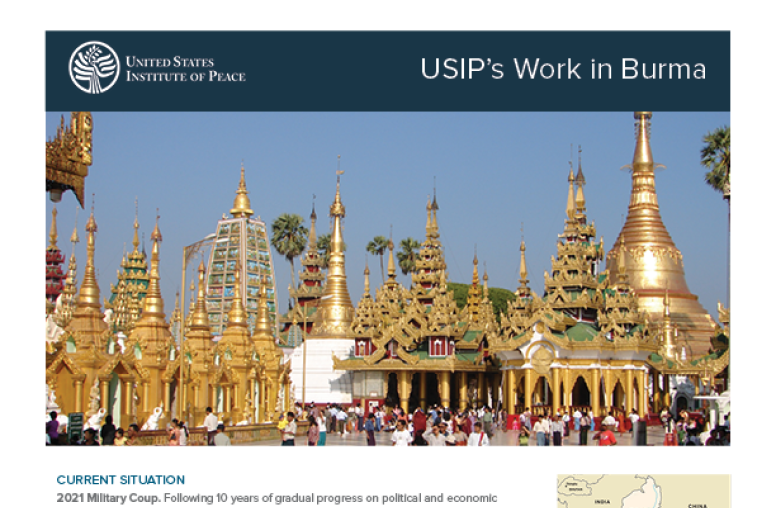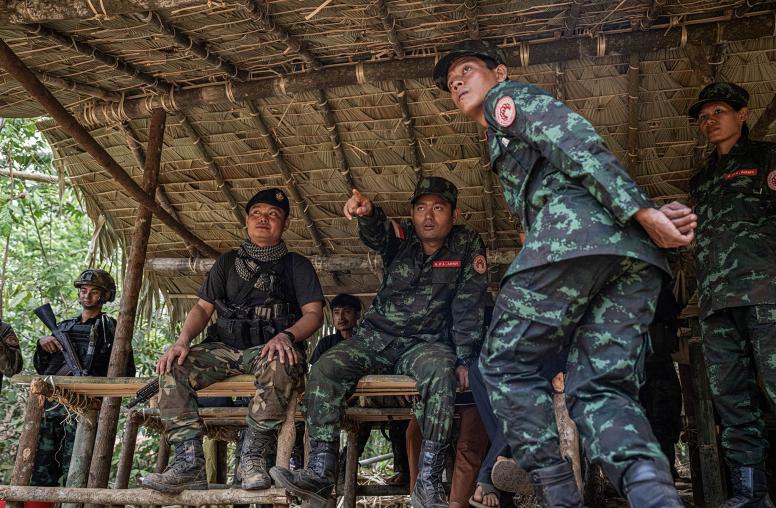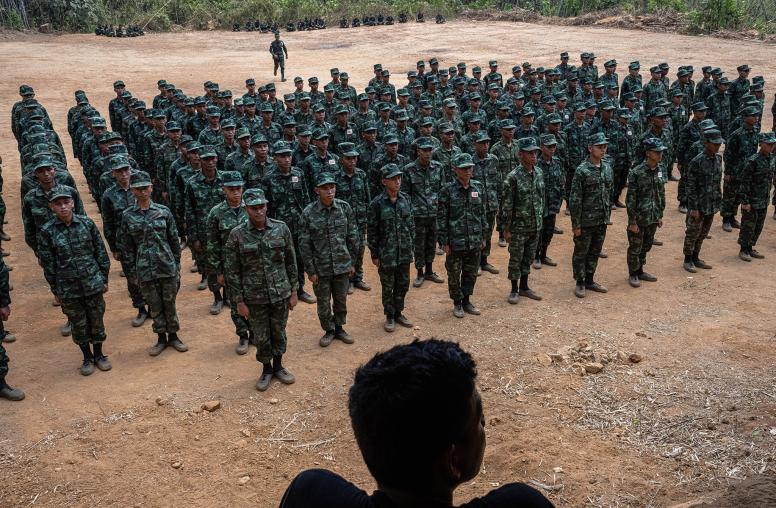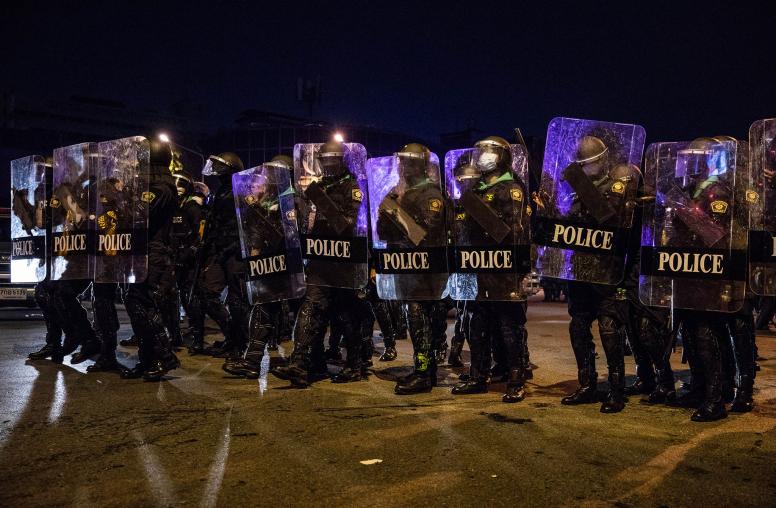Myanmar’s 2020 Elections and Conflict Dynamics
In late 2020, Myanmar will hold a general election for more than a thousand seats in Union, state, and regional legislative bodies. The next year and a half will also see two high-level, conflict-laden processes capture domestic and international attention—the 21st Century Panglong peace conference and possible attempts to repatriate Rohingya refugees. This report evaluates the environment in which the peace process, Rohingya repatriation, and the election intersect and identifies opportunities for mitigating conflict in the run-up to the election.

Summary
In late 2020, Myanmar will hold a general election for more than a thousand seats in its legislative bodies. The lead-up to this election overlaps with the 21st Century Panglong peace process and the possible repatriating of Rohingya refugees in ways that only deepen social tensions. At issue is that the underlying logics of peace processes and elections are at odds: on the one hand, conciliation and compromise; on the other, competition, victory, and defeat.
Myanmar’s electoral history favors large parties at the expense of smaller ones and independent candidates, diminishing the prospect that elections might de-escalate conflict. Divisive campaigning is especially likely to detract from the peace process, as it did in 2015. Facebook will be a platform for disinformation, hate, and voter suppression as well as a catalyst for possible offline action. Opposition parties will campaign on defense of the nation, race, and Buddhism from both foreign influences and Islam.
The question of refugee repatriation will likely separate the ruling party from Rakhine ethnonationalists. Women candidates may also be at risk: the percentage of women parliamentarians at the national level increased from 6 percent in 2010 to 13 percent in 2015, but by-elections in 2017 and 2018 included relatively few women candidates. Populist appeals more generally may undermine Bamar and Rakhine support for the peace process, especially given that social media tends to amplify intercommunal polarization.
Communal, religious, and nationalist claims will certainly be center stage during the campaign, raising the possibility that tensions could boil over. The sheer numbers of security actors and forces increase the likelihood of violence that the military and police are ill prepared to prevent. Last, given laws that criminalize defamation, the media will find it difficult to cover the election campaign without risking jail time.
About the Report
Based on more than seventy interviews, surveys of both mainstream and social media in Myanmar, and a desk review of available election-related materials, this report evaluates the environment in which the current electoral cycle, Rakhine conflicts, and the 21st Century Panglong peace process intersect and identifies opportunities for mitigating conflict risks in the lead-up to the 2020 Myanmar election.
About the Authors
Mary Callahan is an associate professor in the Henry M. Jackson School of International Studies at the University of Washington. Myo Zaw Oo is an independent researcher focusing on conflict and elections.



